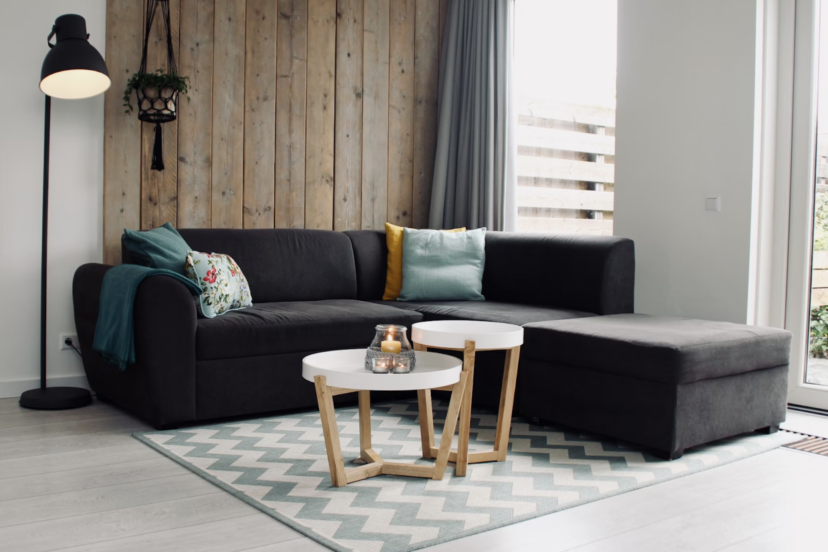Smart Furniture: Revolutionizing Modern Living with Technology
Given the rise of consumer technology, the demand for smart furniture is growing. These next-generation products accommodate smartphones, tablets, computers, and other devices consumers love, making home and work life more convenient.
Moreover, observers claim the arrival of smart furniture is a natural development, similar to when Apple blended electronics with aesthetics. Such products make homes more functional and aesthetic, setting them up to facilitate modern lifestyles.
Technological Innovations
To deliver the next generation of convenience, smart furniture incorporates numerous seamless innovations and features. Manufacturers aim to combine form and function elegantly, giving consumers products that meet their lifestyle and aesthetic requirements.
For example, discreet wireless charging is a feature of many units. Engineers build pads into the surface of sideboards and coffee tables, allowing users to place compatible phones in charging zones to top them up while they watch TV. Other products have built-in speakers for streaming podcasts and USB cable ports for external device storage, charging, and data transfer, all carefully hidden from view.
IoT connectivity is also being incorporated. Smart furniture can often connect to home networks, allowing users to control devices remotely. In light of this, some items have touch controls. Built-in sensors and switches adjust the furniture’s position or setup, making it easier to configure to a person’s needs. As an example, desks might have a button to adjust their height, or a sofa bed may have a switch to transition from one state to another without manual interaction.
Moreover, these improvements in technology look set to continue. Emerging trends include the development of materials that respond to the environment, self-cleaning surfaces, and energy-efficient designs made with sustainable materials.
Benefits of Smart Furniture
The benefits of smart furniture are substantial – and something that excites many homeowners and businesses interested in the tech. One obvious benefit is enhanced convenience. For example, smart furniture can integrate with home automation systems or adjust its position to give users a more restful night’s sleep. It also assists with ergonomics, allowing people to fine-tune their position while sleeping or resting.
Energy-efficient designs are also becoming possible. For example, smart furniture is making use of LED bulbs to provide illumination while harvesting recycled materials for primary construction.
Some pieces of smart furniture can also contribute to health with features like posture correction alerts and activity tracking. Intelligence-imbued chairs have sensors that detect weight distribution and can tell users when they need to switch positions or stand up and take a walk.
Popular Smart Furniture Products
Today, there are numerous smart furniture products on the market already popular with consumers. Many of these support health and make home living more convenient.
Here are some examples:
- Smart bed with sleep tracking. These incorporate sensors that link to a companion app on your device, telling users how long and well they slept.
- Sofas with phone charging ports. These eliminate the need to find a plug socket when users want to charge their phones and allow them to use it in comfort as they top up the battery.
- Height-adjustable desks. These products make it more straightforward to improve ergonomics on the fly and create a more comfortable typing position.
- Desks with fitness features. These additions integrate physical activity into your workday, such as treadmills and static bikes.
Design and Aesthetics
While growing in popularity, smart furniture is also becoming more stylish. Designers are blending aesthetics into designs to make their products more attractive and appealing to end users. Examples include coffee tables with built-in LED lighting or the use of durable materials like tempered glass and brushed metal in beds and sofas. These additions combine beauty and function, giving consumers the kind of furniture they want to add to their interior spaces.
Of course, incorporating technology into furniture without sacrificing design integrity is challenging. Integrating hardware, such as wiring, charging ports, and sensors, requires clever concealment behind panels to maintain a sleek, uninterrupted look. Furthermore, smart furniture has to remain user-friendly. Consumers should be able to maintain their tables, sofas, and beds, instead of having to throw them away when something goes wrong.
Consumer Insights
Currently, the commercial sector dominates the demand for smart furniture. Businesses want desks, tables, and sofas that meet the aesthetic, ergonomic, and productivity needs of staff and clients. However, the sector is seeing growing interest from urban millennials and Gen Z consumers who want multifunctionality, convenience, and space-saving solutions for their cramped living spaces.
Unfortunately, the barriers to adoption remain substantial. One issue is cost. Smart furniture that blends form and function isn’t cheap. Complexity is another issue. Consumers sometimes feel frustrated by emerging, non-intuitive technology that doesn’t work how they expect or requires lots of time to set up.
Many also wonder whether purchasing such furniture offers them any real utility over existing solutions (such as manually adjusting the position of sofas or charging a phone using a conventional socket). It can seem like a gimmick. Likewise, some consumers fear smart furniture isn’t as durable as conventional alternatives because of complex internal circuitry and electronics. As such, reduced lifespan is a worry.
Sustainability and Ethical Considerations
The sustainability and environmental impact of producing and disposing of high-tech furniture is also a growing concern, particularly regarding the electronic components. While conventional wood can be eco-friendly and returned to nature, some elements in switches, circuits, and chips are difficult or impossible to recycle.
Even so, manufacturers are trying to find solutions, including:
- Using sustainably sourced materials, like FSC-certified wood
- Integrating recycled metals into the design (reducing the need for quarrying and extraction)
- Making furniture modular to avoid the need to throw out entire units when one component breaks
- Reducing the waste required to create furniture during the manufacturing process (such as off-cuts of wood and metal)
- Introducing refurbishment and buy-back programs to allow commercial and private customers to continue using products long-term
- Adopting circular economy principles, allowing consumers to fully recycle furniture when it reaches the end of its life
Future Prospects
Given the developments thus far, smart furniture is likely to continue growing in scope and functionality in the future. Over the next decade, manufacturers will add further technologies to enhance products’ appeal to customers and businesses.
For instance, AI integration may allow furniture to learn user behavior and preferences, letting it predict what owners want next. Desk chairs could adjust automatically to correct posture while coffee tables could set lighting depending on the owner’s mood.
Augmented reality (AR) technology may also have a substantial impact. The technology could allow manufacturers to integrate more features into their furniture like digital displays to appear on coffee tables or mirrors that connect to smart glasses. These technologies will ultimately allow users to enjoy deeper and more intimate relationships with their furniture, bringing their homes alive.




